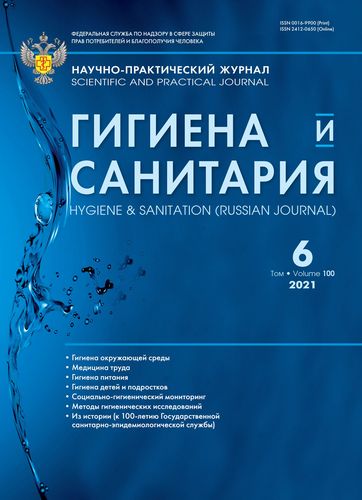The Moscow city government in the fight against epidemics (late XIX – early XX centuries)
- Авторлар: Sherstneva E.V.1
-
Мекемелер:
- FSSBI «N.A. Semashko National Research Institute of Public Health»
- Шығарылым: Том 100, № 6 (2021)
- Беттер: 647-652
- Бөлім: FROM THE HISTORY OF SANITARY AFFAIRS
- ##submission.datePublished##: 14.07.2021
- URL: https://vestnik.nvsu.ru/0016-9900/article/view/639314
- DOI: https://doi.org/10.47470/0016-9900-2021-100-6-647-652
- ID: 639314
Дәйексөз келтіру
Толық мәтін
Аннотация
Moscow, which in the post-reform period became the center of the largest commercial and industrial district and the main railway hub of the Russian Empire, was particularly vulnerable to epidemics. Since the second half of the XIX century, the solution of sanitary issues of urban life and the fight against epidemics were in the competence of the Moscow city government. The epidemic threat contributed to the rapid creation of a permanent organization under the Moscow city government, which included doctors of a sanitary profile. The city has developed a system for fighting the spread of infections, based on a card system for informing the sanitary doctor and investigating each case of the disease. Among the anti - epidemic measures, disinfection of premises, isolation of sick people and family members, and, if necessary, hospitalization were widely used. From expensive and ineffective sporadic actions caused directly by the epidemic, the sanitary organization of the city increasingly moved to broad measures of a preventive nature, which directed its development along the path of specialization, allowing it to cover the sanitary supervision of educational, commercial institutions, the work of urban communications-water supply and Sewerage, developed measures of specific prevention (against typhus, smallpox, etc.) and social support for the population. The high level of improvement of the city and extensive preventive measures, due to the large financial capacity of the Moscow city government, allowed in the early twentieth century. significantly reduce the incidence of infectious diseases and even prevent the widespread spread of cholera in 1908-1909.
Негізгі сөздер
Авторлар туралы
Elena Sherstneva
FSSBI «N.A. Semashko National Research Institute of Public Health»
Хат алмасуға жауапты Автор.
Email: lena_scherstneva@mail.ru
ORCID iD: 0000-0002-8612-4834
Candidate of historical Sciences, senior researcher of the Department of history of medicine and health OF the national research
Institute of public health named after N.A. Semashko, Moscow, 105064, Russian Federation.
e-mail: lena_scherstneva@mail.ru
РесейӘдебиет тізімі
- Complete Collection of Laws of the Russian Empire. Collection II [Polnoe sobranie zakonov Rossiyskoy imperii. Sobranie II]. St. Petersburg; 1874; 45(48498): 821–39. (in Russian)
- Granovskiy L. To the 30th anniversary of the sanitary organization of Moscow. Vrachebno-sanitarnaya khronika Moskvy. 1914; (9): 573–84. (in Russian)
- Zagorskiy S. Growth of modern cities. In: Encyclopedic Dictionary [Entsiklopedicheskiy slovar’]. Moscow: «Brat’ya A. i I. Granat i K°»; 1912: 16. (in Russian)
- Uspenskiy V.P. Moscow: a Brief Outline of the Medical and Sanitary Organization [Moskva: kratkiy ocherk vrachebno-sanitarnoy organizatsii] Moscow; 1911. (in Russian)
- Report of the Moscow city Council on taking measures against the appearance and development of the cholera epidemic in Moscow and on the activities of the Sanitary Commission in 1884 and 1885. Moscow; 1886. (in Russian)
- Granovskiy L.K. Review of the Moscow city medical and sanitary organization. Obshchestvennyy vrach. 1912; (3): 1–30. (in Russian)
- Reports on the activities of the Medical Council of the Moscow city government. Moscow; 1899–1917. (in Russian)
- Zhbankov D.N. Collection on Urban Medical and Sanitary Affairs in Russia [Sbornik po gorodskomu vrachebno-sanitarnomu delu v Rossii]. Moscow: Tipo-litografiya V. Rikhter; 1915. (in Russian)
- Zhbankov D.N. Some results of the city medical and sanitary device. Obshchestvennyy vrach. 1915; (7–8): 449–85. (in Russian)
- Ads. Obshchestvennyy vrach. 1913; (10). (in Russian)
- The Moscow city Council. Reports. 1909; 1(92). (in Russian)
- The Moscow city Council. Reports. 1909; 1(128). (in Russian)
- Uspenskiy V.P. Cholera in Moscow in 1908–1909. In: Proceedings of the XI Congress of the Society of Russian doctors in memory of N.I. Pirogov. Part 2 [Trudy XI s”ezda Obshchestva russkikh vrachey v pamyat’ N.I. Pirogova. Chast’ 2]. St. Petersburg; 1913: 169–76. (in Russian)
- Cholera and the fight against It in St. Petersburg in 1909. Preliminary report of the Chairman Of the City sanitary Commission V. O. Hubert [Predvaritel’nyy otchet Predsedatelya Gorodskoy sanitarnoy komissii V.O. Guberta.]. St. Petersburg: Gorodskaya tipografiya; 1910. (in Russian)
- Vasil’evskiy N.P. Urban medicine at the all-Russian hygienic exhibition of 1913. Obshchestvennyy vrach. 1913; (9): 1103–4. (in Russian)
- Report of the Saint Petersburg city public administration for 1908. St. Petersburg; 1910. (in Russian)
Қосымша файлдар







